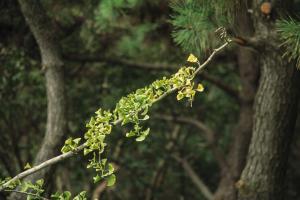Introduction:
Praying mantis, known for their unique physical appearance, have always been fascinating creatures for humans. There are over 2,400 species of praying mantis around the world, and they have different diets based on their habitat, size, and climate. In this article, we will explore the question that many gardeners have been asking: Do praying mantis eat tomato plants?
Praying mantis diet:
Praying mantis has a diverse diet, but insects are their primary source of food. They feed on different insects such as flies, beetles, crickets, and caterpillars. In some cases, they can even feed on small amphibians and reptiles. Adult mantis can eat ten to twenty insects in a day. When it comes to plants, praying mantis do not generally eat living plants, but they do use them as a habitat for laying eggs.
Tomato Plants and Praying Mantis:
Tomato plants are not usually the preferred choice for praying mantis to lay eggs. But there are anecdotal stories of gardeners witnessing praying mantis on tomato plants, which can lead to confusion regarding their diet. However, the praying mantis on tomato plants are unlikely to be eating the plant. Instead, they are either using the plant as a habitat or waiting to capture an insect that has landed on the plant. Praying mantis are natural predators, and they are beneficial for gardens as they can help control pest populations without the use of pesticides.
Praying mantis and gardeners:
Praying mantis are beneficial for gardeners as they help in controlling pest populations. They are natural predators and can help keep away insects that are harmful to plants. However, they are also known to feed on beneficial insects like bees and butterflies, which can have a negative effect on the ecosystem. It is essential to understand the lifecycle and habits of praying mantis before introducing them to the garden. Gardeners can also use other techniques to control pest populations such as crop rotation, companion planting, and using organic pesticides.
Conclusion:
Praying mantis are fascinating creatures that play an important role in maintaining the balance of the ecosystem. While they do not eat tomato plants, they are still beneficial for gardens as they can help control pest populations. Gardeners must understand the lifecycle and habits of praying mantis before introducing them to the garden. By using different techniques, such as crop rotation and companion planting, gardeners can create a sustainable and healthy garden ecosystem.

 how many times do yo...
how many times do yo... how many planted tre...
how many planted tre... how many pine trees ...
how many pine trees ... how many pecan trees...
how many pecan trees... how many plants comp...
how many plants comp... how many plants can ...
how many plants can ... how many plants and ...
how many plants and ... how many pepper plan...
how many pepper plan...

































